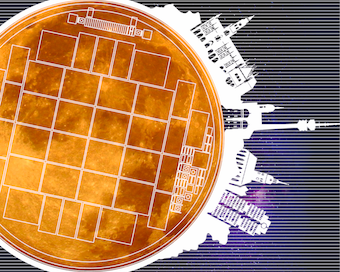Speaker
Description
I will report on the radiation resistance of 50-micron thick LGAD detectors, manufactured at the Fondazione Bruno Kessler, employing several different types of gain layer. LGAD detectors with gain layer doping of Boron, Boron low-diffusion, Gallium, Carbonated Boron and Carbonated Gallium have been designed and successfully produced. These sensors have been exposed to neutron fluences up to φn ∼ 3·10$^{16}$ n/cm$^2$ and to proton fluences up to φp ∼ 9·10$^{15}$ p/cm$^2$ to test their radiation resistance. The data show that Gallium-doped LGAD are more affected by initial acceptor removal than Boron-doped LGAD, while the presence of Carbon reduces the initial acceptor removal for both type of doping. Boron low-diffusion shows a higher radiation resistance than that of standard Boron implant, indicating a dependence of the initial acceptor removal mechanism upon the implant width. This study also demonstrates that proton irradiation is at least twice more damaging than neutron irradiation.




